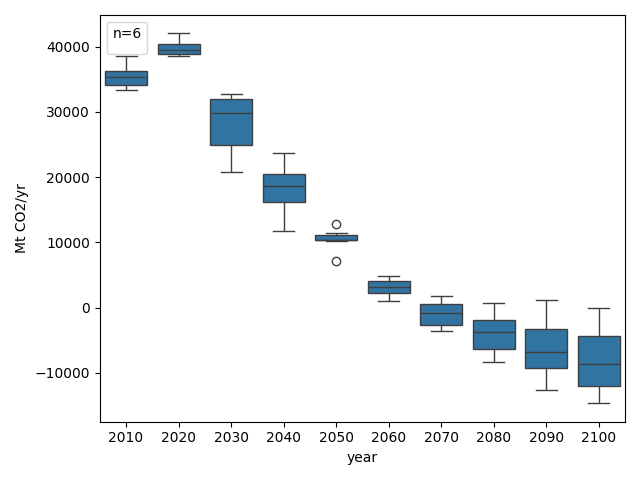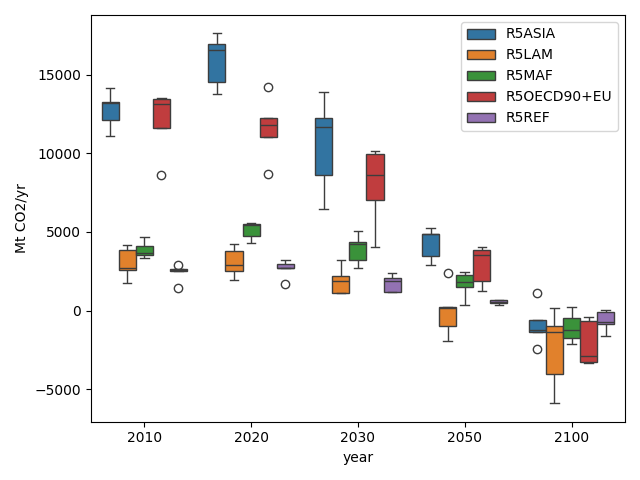Note
Go to the end to download the full example code
Boxplot charts¶
# sphinx_gallery_thumbnail_number = 2
Read in tutorial data and show a summary¶
This gallery uses the scenario data from the first-steps tutorial.
If you haven’t cloned the pyam GitHub repository to your machine, you can download the file from https://github.com/IAMconsortium/pyam/tree/main/docs/tutorials.
Make sure to place the data file in the same folder as this script/notebook.
import matplotlib.pyplot as plt
import pyam
df = pyam.IamDataFrame("tutorial_data.csv")
df
/home/docs/checkouts/readthedocs.org/user_builds/pyam-iamc/checkouts/stable/pyam/utils.py:318: FutureWarning:
The previous implementation of stack is deprecated and will be removed in a future version of pandas. See the What's New notes for pandas 2.1.0 for details. Specify future_stack=True to adopt the new implementation and silence this warning.
<class 'pyam.core.IamDataFrame'>
Index:
* model : AIM/CGE 2.1, GENeSYS-MOD 1.0, ... WITCH-GLOBIOM 4.4 (8)
* scenario : 1.0, CD-LINKS_INDCi, CD-LINKS_NPi, ... Faster Transition Scenario (8)
Timeseries data coordinates:
region : R5ASIA, R5LAM, R5MAF, R5OECD90+EU, R5REF, R5ROWO, World (7)
variable : ... (6)
unit : EJ/yr, Mt CO2/yr, °C (3)
year : 2010, 2020, 2030, 2040, 2050, 2060, 2070, 2080, ... 2100 (10)
A boxplot of CO emissions¶
We generate a simple boxplot of CO2 emissions across one scenario implemented by a range of models.
data = df.filter(
scenario="CD-LINKS_NPi2020_1000", variable="Emissions|CO2", region="World"
)
data.plot.box(x="year")
plt.tight_layout()
plt.show()

No artists with labels found to put in legend. Note that artists whose label start with an underscore are ignored when legend() is called with no argument.
A grouped boxplot¶
We can add sub-groupings of the data using the keyword argument by.
data = df.filter(
scenario="CD-LINKS_NPi2020_1000",
variable="Emissions|CO2",
year=[2010, 2020, 2030, 2050, 2100],
).filter(region="World", keep=False)
data.plot.box(x="year", by="region", legend=True)
# We can use matplotlib arguments to make the figure more appealing.
plt.legend(loc=1)
plt.tight_layout()
plt.show()

Total running time of the script: (0 minutes 0.641 seconds)